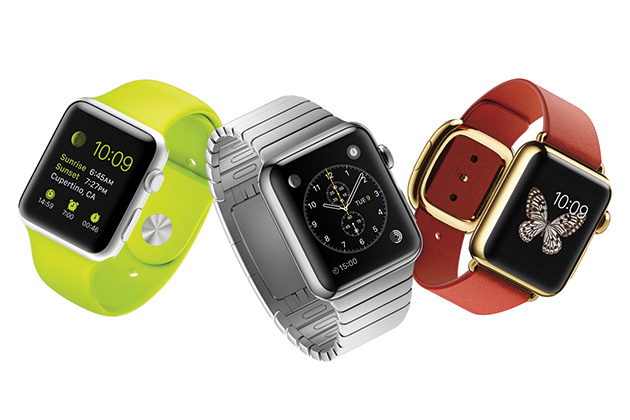 In early 2015, Apple will launch its Apple Watch-a new wearable tool that not only brings your music, maps and calendar to your wrist, but can also track biometrics like sleep patterns, heart rate and calories burned. With this latest product rollout, the company is essentially dipping a toe into the highly regulated healthcare industry. While this move puts Apple on track to draw in more customers and revenue, it also introduces new supply chain and third-party risk management challenges.
In early 2015, Apple will launch its Apple Watch-a new wearable tool that not only brings your music, maps and calendar to your wrist, but can also track biometrics like sleep patterns, heart rate and calories burned. With this latest product rollout, the company is essentially dipping a toe into the highly regulated healthcare industry. While this move puts Apple on track to draw in more customers and revenue, it also introduces new supply chain and third-party risk management challenges.But why, if Apple plans on using the same manufacturing processes and suppliers, would the tech giant run into any additional risk?
The issue is that Apple is entering an industry far outside of its comfort zone-one in which consumers are much more concerned with the reliability and accuracy of their devices. While an iPhone 5 with a short battery life is not the end of the world, an Apple Watch that provides unreliable heart rate or blood sugar readings could quickly lose customer trust and loyalty.
Beyond the challenges of meeting consumer expectations, Apple is delving into a highly regulated industry. Apple and its vendors-which will no doubt be storing consumer information in the iCloud-will be responsible for following certain regulations. Whether or not they will have to abide by HIPAA rules has yet to be determined. But, as the wearable industry grows into the healthcare space with tools meant to help healthcare practitioners provide better care for patients, the FDA will be forced to look closely at this shifting healthcare model and how it can best be regulated.
Healthcare compliance is tricky. Even for software providers that are just collecting, storing or communicating healthcare information, there is a set of stringent regulations that must be considered, whether regarding data or one of the Apple Watch's many sensors.
Apple has given itself a whole new set of headaches with its foray into collecting and storing healthcare data, but the manufacturing side creates some risks as well. For starters, Apple has a long track record of supplier issues-most specifically, its problems with Foxconn that came to light in late 2013. Foxconn, the manufacturer responsible for assembling the majority of Apple's products, was found in direct violation of labor laws for overworking employees without proper compensation. If Apple has any hopes of minimizing its third-party risk and preventing another public embarrassment, it must raise its supplier standards and better manage the supplier vetting process.
Supplier risk is nothing new, but managing the supplier process can seem like an unbeatable challenge. Yet many firms are already working toward increased supply chain compliance. By leveraging existing supply chain management processes and procurement activities, firms like Apple can better control potential supplier risk.
Here are a few tips to best ensure supply chain compliance:
1. Establish a comprehensive supplier vetting process. It is possible to mitigate supply chain risk post-sourcing once you notice the relationship turning sour. However, you will save a lot of unneeded stress by doing your due diligence during the supplier vetting process. Once you have selected your suppliers, actively manage them by engaging in quarterly reviews to ensure the relationship continues to meet the terms and expectations of the initial agreement.
2. Meet suppliers in person. New technologies have allowed for most business activities, including sourcing, to be performed online. But firms may also benefit from taking the sourcing process offline and visiting potential suppliers' sites to analyze processes and predict performance. Think of it as a pre-interview interview. Not only will this establish a better connection between your firm and suppliers, you will be more aware of how that side of the supply chain operates. In doing so, firms that are expanding into new industries or are looking to switch suppliers can better uncover potential risks that are not visible by simply evaluating their rate of on-time deliveries or past international labor violations.
3. Extend supply base segmentation to include risk. A number of supply chain risks are outside of your control, and even outside the control of your suppliers. But all suppliers-even the little guys-can help mitigate supply chain risk. When segmenting supply bases and determining how a supplier contributes to the buyer's core competency and competitive advantage, firms should include risk in their assessments. This will make it much easier to break down risk and identify which suppliers might be high-priority or high-risk.
4. Invest in capable tools. After devoting time to the more manual, gritty aspects of sourcing, it is important to provide procurement managers with the tools and flexibility to maintain their work. Over time, tools have been consolidated in order to streamline and simplify the sourcing process. Though firms are plagued with a number of risk management factors beyond their control, technology should not be one of them.
There is no doubt that Apple's latest toy will improve (or at least contribute to) the healthcare experience. However, unlike any Apple product released thus far, this one must comply with a distinct set of regulations, presenting increased risks to both the company and its suppliers. But, by properly vetting potential suppliers, Apple and other firms can better protect themselves against third-party risk.
